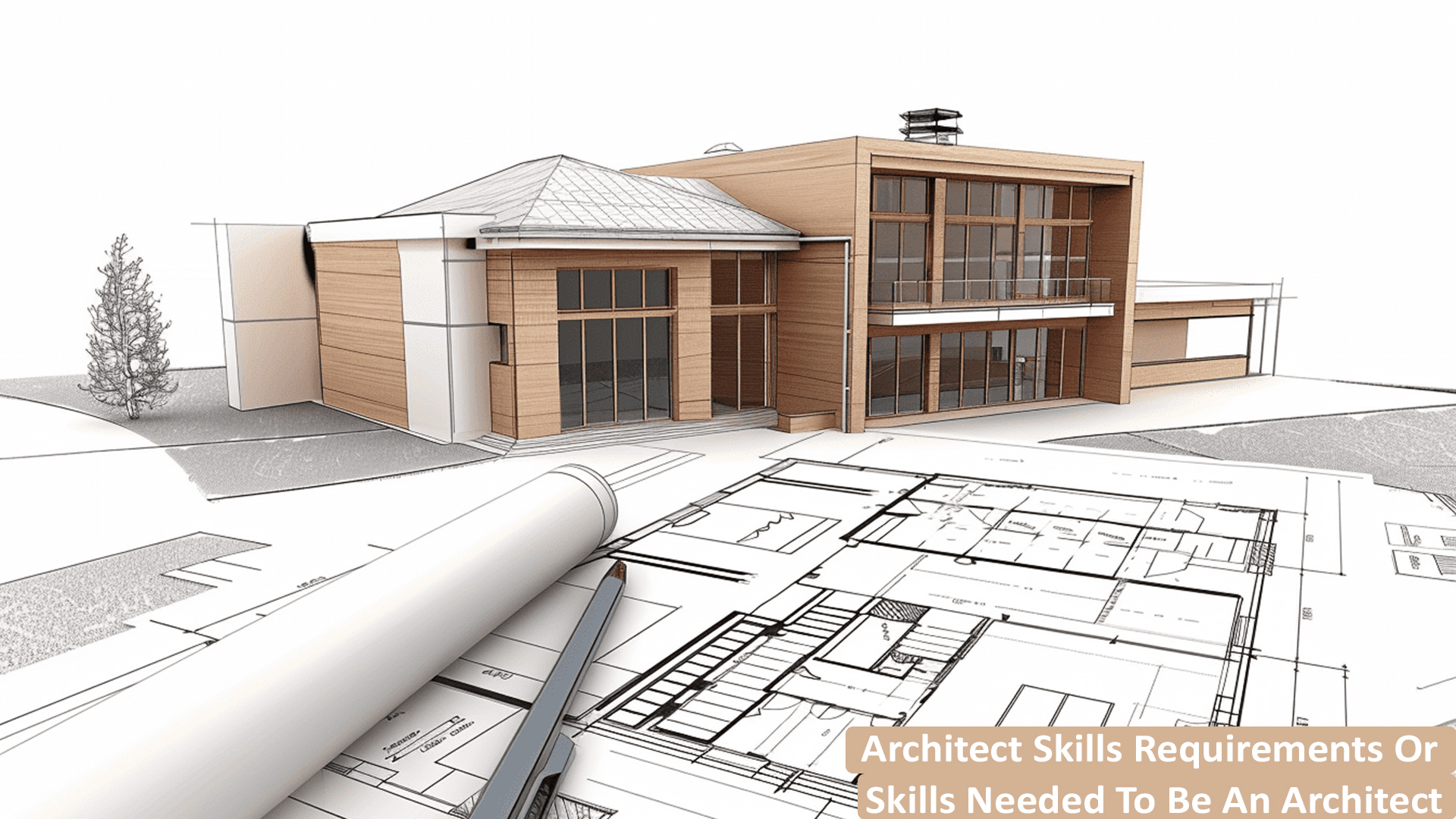Architect-Approved Home Improvement Ideas
Architect-Approved Home Improvement Ideas
Blog Article
Comprehending the Diverse Career Paths Available for Aspiring Architect
As a hopeful Architect, you have a globe of career paths waiting for you. Whether you're drawn to standard style or the nuances of sustainable style, there's a specific niche that straightens with your interests.
Conventional Design: Creating Frameworks and buildings
Traditional architecture focuses on designing structures and frameworks that mix performance with aesthetic appeal. Your styles can reflect cultural heritage, showcasing local customs while satisfying contemporary demands.
You'll establish abilities in composing, model-making, and site analysis, allowing you to picture and connect your concepts properly. Involving with customers, you'll require to comprehend their vision and translate it into feasible styles.
Additionally, building codes and sustainability techniques are essential in your job, ensuring your structures are ecologically friendly and secure. As you expand in your profession, you'll find possibilities in household, business, and even remediation jobs, each offering distinct obstacles. Accepting traditional style paves the means for a satisfying career that admires the past while shaping the future.
Urban Preparation: Shaping Areas and Public Spaces
As an aspiring Architect, you can play a necessary role as a city planner, changing how areas operate and connect. By using neighborhood interaction techniques, you'll guarantee that locals have a voice fit their setting. Plus, incorporating sustainable design principles will certainly aid produce areas that not only fulfill today's requirements but likewise protect the future.
Function of Urban Planners
While many could believe of designers as the single enthusiasts behind structures, city planners play an important role in shaping the wider landscape of neighborhoods and public spaces. By working together with different stakeholders, you'll help design parks, transport systems, and property areas that promote social communication and availability. Your proficiency in spatial style and neighborhood dynamics permits you to visualize future growth while maintaining cultural heritage.
Area Involvement Techniques
Effective area interaction strategies are crucial for urban organizers to guarantee that the voices of locals are heard and valued in the planning procedure. To promote purposeful dialogue, you must prioritize open discussion forums and workshops where area members can express their ideas and concerns. Usage surveys and social networks to reach a more comprehensive audience, making sure diverse point of views are consisted of. Working together with neighborhood organizations can boost trust and assist in deeper connections. It is essential to offer clear details about decision-making procedures and suggested projects, enabling homeowners to feel educated and encouraged. By actively including and listening comments, you'll produce rooms that reflect the neighborhood's requirements, inevitably resulting in even more effective and lasting urban atmospheres. Welcome openness and continual dialogue for long-term impact.
Lasting Style Principles
When developing urban spaces, including lasting style principles is important for producing environments that thrive both environmentally and socially. You need to begin by concentrating on energy performance, making use of materials that decrease waste and advertise recycling. Take into consideration incorporating eco-friendly spaces, like parks and yards, to enhance biodiversity and improve air top quality. Promoting walkability and public transport can decrease reliance on vehicles, fostering a healthier area.
Creating with water conservation in mind is likewise key-- consider rain yards and permeable surfaces to take care of stormwater. Including area participants throughout the planning process assurances that the areas you develop meet their needs and motivate social interaction. By accepting these principles, you'll contribute to dynamic, sustainable urban landscapes that benefit every person.

Landscape Design: Developing Lasting Outside Settings
As you explore landscape architecture, you'll discover crucial design concepts that develop practical and beautiful outside spaces. Sustainable methods play an essential role in making sure these atmospheres thrive while decreasing environmental impact. And also, you'll find a selection of occupation chances that allow you to make an actual distinction in just how people communicate with nature.
Style Principles in Landscape
Understanding style concepts in landscape style is vital for creating lasting outside atmospheres that harmonize with nature. You'll need to consider elements like equilibrium, proportion, and range to guarantee your designs really feel cohesive and welcoming. Including indigenous plants not only improves biodiversity however additionally lowers water usage, making your landscape resilient. Consider the circulation of room and exactly how people connect with it; paths and seating areas ought to welcome exploration and leisure. Furthermore, take note of seasonal changes, designing with products that enhance the environments year-round (Architect). By prioritizing sustainability and aesthetics, you can develop outside areas that enrich the community and promote wellness. Accepting these principles will certainly establish a solid foundation for your career in landscape architecture.
Lasting Practices Summary
Lasting practices in landscape design not just concentrate on aesthetic appeals yet also prioritize environmental wellness and source preservation. You can design areas that advertise dirt wellness, such as using organic materials and practicing permaculture concepts. Ultimately, these practices guarantee your styles benefit both people and the atmosphere for years to come.
Occupation Opportunities Expedition
With a solid structure in lasting techniques, landscape architecture offers a variety of profession courses that permit you to make a significant influence on the atmosphere. You could function as a landscape developer, developing visually pleasing and functional outdoor areas, or focus on ecological restoration, aiding to revitalize damaged communities. Urban organizers typically team up with landscape engineers to produce eco-friendly rooms in metropolitan settings, enhancing city livability. If you're passionate regarding education and learning, think about ending up being a landscape architecture instructor, motivating future generations. Furthermore, you may collaborate with nonprofits concentrated on ecological sustainability or involve in additional reading study to introduce new methods. Each course not just forms lovely environments however likewise promotes a healthier earth for future generations.
Sustainable Layout: Concentrating On Eco-Friendly Practices
As you explore your profession in architecture, welcoming environmentally friendly methods can set you apart in a competitive field. Sustainable style focuses on creating structures that decrease environmental effect while enhancing passenger well-being. By integrating sustainable products, energy-efficient systems, and sustainable building strategies, you'll add to a greener future.
Begin by acquiring understanding of environment-friendly accreditations like LEED or BREEAM, which can bolster your credentials. Think about exactly how all-natural light, ventilation, and thermal efficiency can optimize design. Team up with engineers and environmental professionals to introduce options that minimize waste and conserve sources.
Do not forget the value of neighborhood involvement-- engaging local stakeholders can inspire layouts that harmonize with the environment. As customers significantly focus on sustainability, your expertise in environment-friendly methods will not only draw in tasks yet also satisfy your enthusiasm for accountable design. Welcome this essential element of the profession, and see your career prosper.
Historic Conservation: Securing and Bring Back Social Heritage
While you commence on your building journey, take into consideration the essential function of historical preservation in maintaining our social heritage. This area focuses on the security and reconstruction of significant structures, websites, and frameworks that inform the stories of our past. By taking part in historic conservation, you'll assist secure the architectural legacy that shapes community identification.
As a historic preservation Architect, you'll evaluate historical significance and examine the problem of frameworks. You'll work carefully with chroniclers and guardians to ensure authentic repair strategies are employed. This occupation course allows you to mix creativity with study, enabling you to develop services that value initial products and craftsmanship.
Your work not only adds to sustainability by reusing existing buildings but additionally cultivates a feeling of pride within communities. Welcoming this path will certainly assist you end up being a guardian of background, preserving the stories and looks that enhance our lives.
Interior Architecture: Enhancing Indoor Spaces
Historic conservation and indoor style both share a dedication to enhancing the constructed environment, yet they concentrate on different elements. While historic preservation stresses preserving a structure's social and historic value, interior architecture absolutely nos in on optimizing interior rooms for capability and visual appeals.
As an aspiring Architect, you'll locate that indoor architecture enables you to mix creative thinking with technical skills. You'll develop rooms that not just look excellent but also promote comfort and performance. This field entails understanding how light, shade, and materials interact within a room, affecting mood and usability.
You'll service numerous tasks, from domestic homes to business workplaces, guaranteeing that each atmosphere satisfies the demands of its owners. By prioritizing user experience, you can change interiors into inspiring and functional areas, making a significant impact on just how people interact with their environments. Accept the chance to boost interior environments and shape the means people work and live.
Industrial Style: Merging Capability With Aesthetic Appeals
Commercial style plays an important duty in creating products that flawlessly blend visual appeals with performance, ensuring that what you make use of everyday is not only aesthetically attractive yet likewise practical. As a hopeful Architect, you could immerse on your own in this field, concentrating on creating every little thing from furnishings to customer electronic devices. Your work includes understanding individual requirements, materials, and manufacturing processes, permitting you to develop ingenious options that improve day-to-day experiences.
In industrial style, you'll commonly collaborate with designers, producers, and marketers, making certain that your layouts are not only gorgeous but likewise feasible. You'll learn to stabilize type and feature, prioritizing use without giving up design. By sharpening your Look At This abilities in mapping out, try this site 3D modeling, and prototyping, you'll be fully equipped to bring your ideas to life. This profession path offers a vibrant setting where creative thinking fulfills functionality, making it a fulfilling option for architects interested in shaping the items of tomorrow.
Regularly Asked Questions
What Educational Accreditations Do I Need to Become an Architect?
To become an architect, you'll need an expert degree in architecture, usually a Bachelor's or Master's. In addition, you'll have to finish an internship and pass the Architect Enrollment Evaluation to practice legitimately.
Exist Qualification Needs for Different Building Job Paths?
Yes, there're qualification requirements for numerous architectural paths. Architect. You'll require to pass tests, complete internships, and sometimes go after specialized training, depending on your picked emphasis, like landscape style, urban layout, or historical preservation
What Software Application Skills Are Necessary for Designers Today?

Just How Can I Gain Practical Experience While Researching Architecture?
You can gain sensible experience by interning at building firms, getting involved in design competitions, offering for neighborhood jobs, or collaborating with schoolmates on real-world projects. These possibilities boost your skills and build valuable connections in the sector.
What Work Opportunities Exist Outdoors Traditional Architecture Firms?
You can explore various task possibilities outside standard design firms, like metropolitan planning, interior design, landscape style, building and construction management, property development, or also duties in sustainability consulting. Each deals distinct challenges and incentives.
Whether you're attracted to conventional style or the nuances of lasting layout, there's a niche that lines up with your passions.When making urban areas, integrating sustainable design concepts is essential for producing settings that thrive both environmentally and socially.As you explore landscape style, you'll discover crucial style principles that create useful and gorgeous outdoor spaces.Comprehending design concepts in landscape design is vital for producing sustainable outside atmospheres that integrate with nature.In industrial design, you'll typically collaborate with marketing experts, makers, and designers, ensuring that your styles are not just beautiful yet also practical.
Report this page